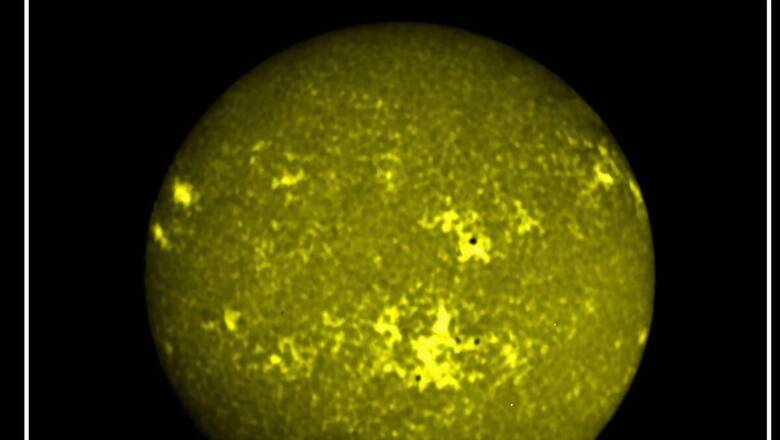
views
The Solar Ultraviolet Imaging Telescope (SUIT) instrument on board the Aditya-L1 spacecraft has successfully captured the first full-disk images of the Sun, ISRO announced on Friday.
The image, taken in 200-400 nm wavelength range, used various scientific filters to capture the photosphere and chromosphere of the sun.
“On November 20, 2023, the SUIT payload was powered ON. Following a successful pre-commissioning phase, the telescope captured its first light science images on December 6, 2023,” an ISRO statement said.
Aditya-L1 Mission:The SUIT payload captures full-disk images of the Sun in near ultraviolet wavelengthsThe images include the first-ever full-disk representations of the Sun in wavelengths ranging from 200 to 400 nm.
They provide pioneering insights into the intricate details… pic.twitter.com/YBAYJ3YkUy
— ISRO (@isro) December 8, 2023
“These unprecedented images, taken using eleven different filters, include the first-ever full-disk representations of the Sun in wavelengths ranging from 200 to 400 nm, excluding Ca II h. The full disk images of the Sun in the Ca II h wavelength has been studied from other observatories,” the statement added.
The image captured sunspots, plage and quiet Sun regions and provided scientists with “pioneering insights into the intricate details of the Sun’s photosphere and chromosphere.”
SUIT observations will help scientists study the dynamic coupling of the magnetized solar atmosphere and assist them in placing tight constraints on the effects of solar radiation on Earth’s climate, the space agency said.
Launched on September 2 by ISRO, Aditya L1 is India’s first space-based mission to study the Sun. The spacecraft positioned in a halo orbit around the Lagrange point 1 (L1) of the Sun-Earth system, approximately 15 lakh km from Earth, offers unique advantage like continuous observation of the Sun without interruptions and the observation of solar activities and its effect on space weather in real time.



















Comments
0 comment